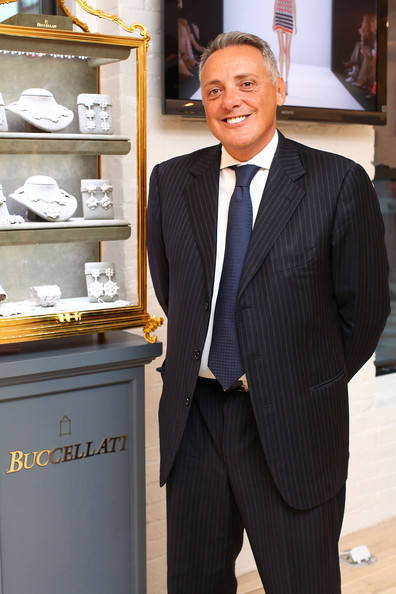Luxury in Today’s Society: Between Excellence and Excess
Moderated by Elizabeth Paton, US Fashion and Luxury Correspondent for the Financial Times, the program brings together an influential circle of experts, including David Yurman, designer and CEO of the David Yurman jewelry brand and company; Alberto Milani, CEO of Buccelatti in the US; and Enrico Libani, the US co-founder and CEO of Cesare Attolini, the exclusive Neapolitan menswear brand that opened a Madison Avenue flagship in 2012.
They will be joined by professors of sociology, philosophy, and business from Columbia University, NYU, and Milano-Bicocca Univeristy, as well as by the authors of the just published Real Luxury: How Luxury Brands Can Create Value for the Long Term (Palgrave Macmillan).
“The luxury sector has been an important arena for the preservation of traditional skills, as well as for technological advances since the middle ages,” says Glenn Adamson, the Museum of Arts and Design’s Director. “The history of luxury is intertwined with many other subjects such as the early development of mass production; the refinement of electricity and domestic appliances; the expansion of rail, car and air travel; and cross-disciplinary experimentation in contemporary fine art.”
Both celebrated and controversial throughout history, luxury goods have simultaneously acted as personal keepsakes, cultural artifacts collected by museums, and symbols of privilege. Often examples of the highest skill and craftsmanship possible, these items have supported the development of new possibilities, but also raise questions of society's attitude towards success, wealth, leadership and progress. The luxury business has been transformed by two decades of rapid growth, and by the technological change, globalization and economic winds that have swept across society. So what does luxury – that most alluring and emotional of product categories – look like today? How are the public’s expectations and understanding of it changing? How are luxury brands responding?
"The concept of luxury depends on context," says Riccardo Viale, Chairman of La Fondazione NY, which supports cultural exchange between Italy and the US. "As societies in the West become more reflective and focus more on ethics, luxury means timelessness, artisanal quality and heritage as well as social and environmental sustainability."
Indeed, many forces are putting pressure on luxury to find new forms of expression and value. In luxury’s traditional markets, notably Europe, the US and Japan, people are more aware of how the pursuit of prosperity has actually eroded the feeling of wellbeing. Meanwhile, in newer markets, like China, customers are demanding luxury that offers meaning beyond the logo.
Whether it chooses to or not, luxury plays an important role as an embodiment of what people consider worth striving towards, which is both evolving and fragmenting as people increasingly pursue their own definitions of success. This undermines luxury brands’ ability to hold themselves up as a universal target of aspiration. And it means looking beyond business and marketing practice to understand the sociological context within which luxury must maintain its relevance.
MAD and La Fondazione NY are in a unique position to explore the present and future of luxury. MAD champions contemporary artists, designers and artisans, and provides an international platform for practitioners who are influencing the direction of cultural production and driving 21st-century innovation. Meanwhile, La Fondazione NY is uniquely placed at the intersection of important influences on luxury, with Italy being home to both historic and contemporary luxury houses and the birthplace of the Slow Movement, which promotes the artisanal culture and vision endemic to luxury.
“Luxury in Today’s Society will certainly become a reference point,” says Adamson. “While European scholars have made great strides in the analysis of luxury recently, this will be the first conference here in the USA to address the present and future of luxury crafts, from both professional and academic perspectives. At the event, we expect both insiders to the sector and respected outsiders to get beyond the surface glitter of luxury and mine its depths.”




































i-Italy
Facebook
Google+
This work may not be reproduced, in whole or in part, without prior written permission.
Questo lavoro non può essere riprodotto, in tutto o in parte, senza permesso scritto.